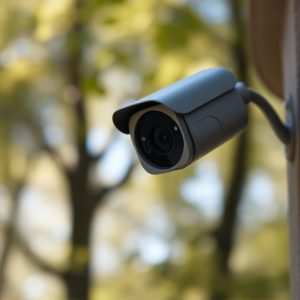Spy Camera Childcare Safety Guide: Detecting Hidden Devices & Legal Boundaries
In pursuit of childcare safety, understanding and combating hidden monitoring devices like spy camer…….
In pursuit of childcare safety, understanding and combating hidden monitoring devices like spy cameras is vital. The Spy Camera Childcare Safety Guide provides essential knowledge for creating secure environments. Caregivers can identify these devices through visual cues and behavioral patterns, ensuring children's privacy. Advanced technologies like heat maps, motion sensors, and AI enhance monitoring in sensitive settings. Additionally, adhering to legal frameworks and privacy laws regarding surveillance is crucial for ethical childcare practices.
Uncover the insidious world of hidden monitoring devices with our comprehensive Spy Camera Childcare Safety Guide. We explore diverse types of spy cameras, their common placements in childcare settings, and non-invasive detection methods—from visual cues to advanced AI technology. Learn how heat maps, motion sensors, and artificial intelligence are revolutionizing surveillance while navigating the legal and ethical boundaries of childcare surveillance. Stay informed to ensure a safe environment for our youngest learners.
- Understanding Spy Cameras: Types and Common Placements in Childcare Settings
- Non-Invasive Detection Methods: Visual and Behavioral Clues to Spot Hidden Devices
- Advanced Technology: Heat Maps, Motion Sensors, and AI for Enhanced Monitoring
- Legal Aspects and Ethical Considerations: Navigating Privacy Boundaries in Childcare Surveillance
Understanding Spy Cameras: Types and Common Placements in Childcare Settings
In the realm of childcare safety, understanding hidden monitoring devices is paramount. Spy cameras, also known as hidden surveillance cameras, come in various types, each with distinct capabilities and common placements within childcare settings. These range from small, miniature cameras disguised as everyday objects like toys or fire detectors to more advanced models that can transmit video feeds wirelessly to a control panel or mobile device.
Placement-wise, spy cameras are often strategically positioned in areas where children spend the most time, such as playrooms, hallways, and even bathrooms. They may be mounted on walls, concealed within false ceiling tiles, or hidden behind decorative pieces to avoid detection. A Spy Camera Childcare Safety Guide is essential for parents and caregivers to familiarize themselves with these devices, enabling them to ensure a secure and monitored environment for the children in their care.
Non-Invasive Detection Methods: Visual and Behavioral Clues to Spot Hidden Devices
In the realm of childcare safety, staying vigilant against potential threats is paramount. Non-invasive detection methods offer a crucial approach to identifying hidden monitoring devices, such as spy cameras, within daycare centers or homes. By discerning visual and behavioral cues, professionals can become more adept at spotting these clandestine devices. For instance, pay close attention to any unusual objects or decorations that might serve as cover for hidden cameras, like wall clocks with irregular shapes or peculiar gadgets placed in obscure corners.
Behavioral observations also play a significant role. Children’s reactions and interactions can provide subtle hints about the presence of spy cameras. Unusually shy or anxious behavior, excessive paranoia among peers, or suspicious activities involving electronic devices are red flags that warrant further investigation. Utilizing these visual and behavioral clues as part of a comprehensive Spy Camera Childcare Safety Guide empowers caregivers to create safer environments for children, ensuring their privacy and well-being.
Advanced Technology: Heat Maps, Motion Sensors, and AI for Enhanced Monitoring
In today’s digital era, advanced technology plays a pivotal role in enhancing monitoring capabilities, especially in sensitive areas like childcare settings. Heat maps, for instance, provide a visual representation of activity patterns, helping caregivers identify peak times and areas that require more attention. By combining heat map data with motion sensors, the Spy Camera Childcare Safety Guide becomes even more effective. Motion sensors can detect unexpected movements or intrusions, triggering alerts to ensure quick responses.
Furthermore, artificial intelligence (AI) adds another layer of sophistication to monitoring systems. AI algorithms can analyze vast amounts of data, learning normal patterns and identifying anomalies. This technology is crucial in spotting potential risks, such as unauthorized access or unusual behavior, allowing caregivers to take prompt action. With these advanced tools, childcare facilities can create a safer environment for children while also promoting transparency and accountability among staff.
Legal Aspects and Ethical Considerations: Navigating Privacy Boundaries in Childcare Surveillance
When it comes to surveillance in childcare settings, there are intricate legal and ethical boundaries to navigate. While spy camera childcare safety guides often emphasize technical aspects like signal detection and device placement, understanding the legal framework is paramount. Every jurisdiction has strict regulations regarding privacy rights, particularly when children are involved.
Implementing monitoring devices in daycare centers or homes raises concerns about consent, data protection, and potential misuse of surveillance footage. It’s crucial for caregivers and parents alike to be transparent about these measures, ensuring all parties understand the scope and purpose of surveillance. Adhering to legal guidelines not only safeguards privacy but also strengthens the ethical foundation of childcare practices.
When it comes to ensuring childcare safety, staying one step ahead of potential threats is paramount. The hidden monitoring device signal detection tips outlined in this Spy Camera Childcare Safety Guide offer a comprehensive approach to identifying covert surveillance equipment. By understanding different camera types and their common placements, recognizing visual and behavioral cues, leveraging advanced technologies like heat maps and AI, and considering the legal and ethical boundaries of surveillance, childcare facilities can create a secure environment for children while respecting privacy rights.


